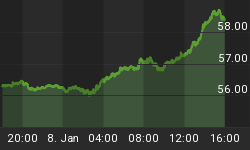Intraweek Alert
11/21/2006 9:04:59 AM
Today's intraweek Fundamental Trader contains a backgrounder on implied volatility.
This is an important subject as Monday's close of the VIX was at a low not seen since 1994. This has ramifications for the market, generally, and specifically to the SPYders.
To that end, we are going to cover several subjects today, to uncover the usefulness of implied volatility. We need to define stock options, volatility, before we can define implied volatility, even though the two are not directly related. Finally, we will introduce some indexes which track implied volatility, and which may be used as indicators for trading highs and lows in the market.
Stock options provide the holder of the contract the right to buy (or sell) the underlying shares of a stock at a given strike price over a given period of time. A call option conveys the right to buy, and a put option conveys the right to sell the underlying shares of the stock. Key elements of the options contract are the strike price and the expiration date for the option.
Volatility refers to a changing value of a financial instrument, or rather the standard deviation of the change in value, with a specific time horizon. Stocks, when they are bought, sold, or sold short, do not have a specific time horizon associated with them. Options contracts, on the other hand, do have such a time horizon.
Volatility may be used to quantify the risk of an option contract over a time period. For an option (or other financial instrument), volatility increases by the square-root of time as time increases. (In actuality, this measure is modeled from a Gaussian walk, which doesn't quite match actual moves, but is sufficient for this dicusssion). This means that volatility four months out is statistically likely to go twice as far as a move one month out. This relationship is the square root of 1 = 1, while the square root of 4 = 2. So 4 months = 2 times the likely move as 1 month.
Finally, actual volatility may be derived from current trading, while historical volatility would refer to financial instruments past trading history. Implied volatility looks to the future, and is derived for options contract price premiums.
The term, implied volatility, is derived, rather than calculated. It is derived based on premiums paid for options contracts. A seller of an option contract conveys the right to the buyer of the contract to buy (or sell) shares of the underlying stock at the strike price for a given period of time. If sellers demand a premium for options, this implies that they perceive greater risk that the underlying stock will have higher volatility for the time of that contract. If sellers are willing to accept lower premiums for options, then they perceive that risk of large price moves is low, and the implied volatility over the life of the contract is low.
Therefore, implied volatility is derived from the time premiums paid for options contracts, as all options contracts have some value, based on the strike price relative to the current price of the underlying stock.
The Chicago Board or Exchange (CBOE) has indexes that track implied volatility. The most often referred to is the VIX (CBOE:VIX), which is an index for stock options of the S&P-500 companies. Another is the VXN (CBOE:VXN), which is an index for stock options of the NASDAQ-100 companies.
Let's take a look at a weekly chart of the VIX.

The chart of the VIX shows a high degree of correlation between lows for the S&P-500 (in this case, we use the SPYders (Amex:SPY) as a proxy for that index) and a high implied volatility. There is also a correlation between low levels of the VIX and market highs for the S&P-500. The difficulty lies in calling an exact top.
The current value of the VIX is just above 10, and the lowest level seen on the index (going back to data we have into 1997) is 9.88, seen in July 2005. Will the VIX reverse at that level and move higher, implying a reversal in the SPYders? We can't readily determine that, but it is certainly a level that will be heavily scrutinized by traders.
Let's take a look to see if we can learn anything from the VXN's weekly chart:

The VXN shows similar correlations of a high VXN and lows on for the QQQQs, and low VXN levels with high prices on the QQQQs. Currently, the VXN is trading in the low 15s. The 2006 low was at 14.38 (intraday) in May, while the absolute low was in late August 2005 at 12.85.
The VXN is trading in a descending wedge. It appears that this wedge closes out later this month, but it could easily expand a bit and keep going into the end of this year.
Many traders seem to try to predict tops and bottoms from the level of the VIX or the VXN. We don't believe that it is possible to predict the bottoms or tops from the levels. We do believe that they are a useful indicator that should be monitored at extremes and for patterns. It is the reversals from when these indicators are overextended that tops or bottoms can be successfully traded, and all traders should be aware of their usefulness as an auxiliary indicator.
Please feel free to send emails with any questions you may have.
Regards and Good Trading,
















